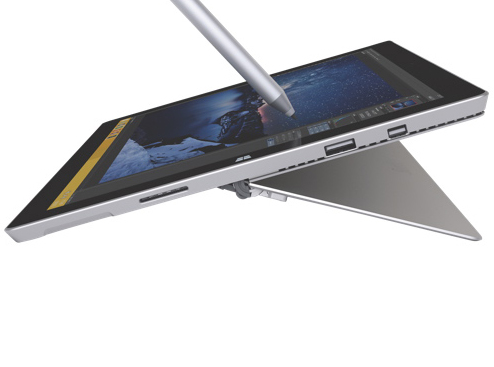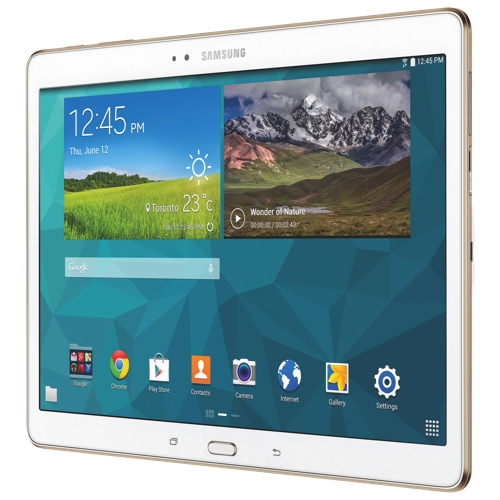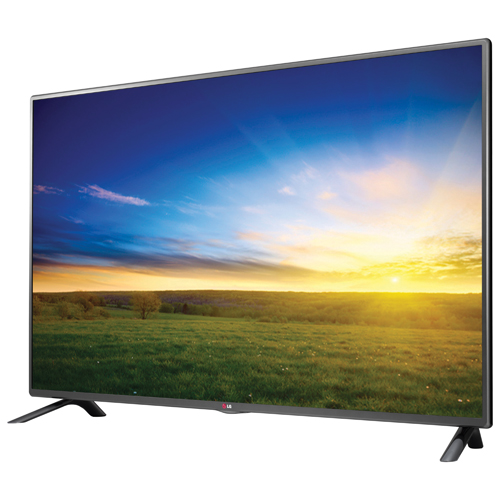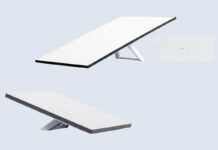Heading off to college or university is an exciting time. And if you’re planning to live in a dorm room, it means stocking up on all of the gear you’ll need for the shared living space.
This includes the obvious items, like towels and clean sheets, plus high-tech buys like a good pair of noise canceling headphones (who knows how loud your roommate will be!), source of music, and a computer.
 You may find yourself trying to decide, when it comes to a display device, whether you should go for a tablet or a TV. Typically, one wouldn’t even think of a tablet as being a full-on TV replacement. But when you consider that your home base will be such small living quarters, this becomes a real consideration. And there are advantages for each technology when it comes to both productivity and entertainment.
You may find yourself trying to decide, when it comes to a display device, whether you should go for a tablet or a TV. Typically, one wouldn’t even think of a tablet as being a full-on TV replacement. But when you consider that your home base will be such small living quarters, this becomes a real consideration. And there are advantages for each technology when it comes to both productivity and entertainment.
Here are some points to consider as you mull over which one to get.
Advantages of the Tablet
The most obvious advantages in getting a tablet for the dorm are size and versatility. When you only have a few hundred square feet to yourself (if that!), dedicating any significant amount of that space to a TV is a sacrifice.
A tablet doesn’t take up any room; you can curl up on the bed with it in hand. It’s versatile in that you can also pop it in your backpack and use it (with a keyboard attachment or stylus) for taking notes in class, composing reports, reading ebooks, and accessing other materials while working in study hall, or even outside on campus on a beautiful Fall day.
 The Microsoft Surface Pro 3, for example, can actually function as a full laptop replacement using the Pro Type Cover that adds a full keyboard. It comes with the Surface Pen stylus that looks and writes like a traditional fountain pen so you can easily take digital notes in class on the screen. And it’s just 1.76 lbs., making it easy to tote around in your backpack. But it also has some stellar features that make it a great choice for back in the dorm, too. (More on those later.)
The Microsoft Surface Pro 3, for example, can actually function as a full laptop replacement using the Pro Type Cover that adds a full keyboard. It comes with the Surface Pen stylus that looks and writes like a traditional fountain pen so you can easily take digital notes in class on the screen. And it’s just 1.76 lbs., making it easy to tote around in your backpack. But it also has some stellar features that make it a great choice for back in the dorm, too. (More on those later.)
Samsung’s Galaxy Tab S is also uber-portable at just 6.6mm thin, has a fingerprint scanner for security when using it outside of the dorm, and offers long battery life: up to 9 hours when watching video.
Nowadays, when it comes to entertainment, a tablet can do almost anything an entry-level TV can. During downtime, you can access live TV through mobile apps, or content from sources like YouTube and Netflix.
The Surface Pro 3 has a 12”, 2,160 x 1,440 high-definition screen that’s more than good enough for comfortably watching videos. And you can position it easel-style using the adjustable kickstand for hands-free viewing. The Dolby Audio-enhanced sound and front-facing speakers further add to the entertainment experience. And using the 3.5mm jack, you can connect a pair of headphones so you don’t disturb your roommate.
The Galaxy Tab’s rated 9-hour battery life would allow for a full movie marathon or TV season binge-watch before needing to be plugged in. Its 2,560 x 1,600, 10” Super AMOLED screen supplies a stunning picture. And the multi-tasking features let you continue doing schoolwork while still keeping up with the game in a different window.
One would think cost would be far more favourable with a tablet than a TV, but this really depends on which tablet you want. Some small-sized TVs might actually cost less.
 Advantages of the TV
Advantages of the TV
You might decide that a small-sized TV makes more sense for your setup.
One reason might be that it makes viewing by multiple people far more favourable. If you plan to catch up on your favourite shows, have a relaxing movie night, or share class materials with your roommate or classmates, having a larger-screened TV that you can connect your computer to will make that more comfortable than having everyone crowd around a tablet, or access materials on separate screens. Cramming four friends into the dorm room will be far more fun if everyone can sit back and watch from separate positions while still getting a good view.
Even on the smallest end of the TV scale, you’re still looking at about 22”, like with the Samsung UN22F5000AFXZC LED HDTV. You’ll get advantages like 60 Hz refresh rate, and HDMI and USB inputs for connecting other devices, like an Apple TV or Google Chromecast.
From a schoolwork perspective, the large screen can come in handy by doubling as an oversized monitor. You might be using a 15” or 17” notebook. Connect it to a 22” or even 32” TV, and you can now enjoy a better experience if you need to go over diagrams and charts, for example, or watch a video for class.
 If you have the room to spare, go up a bit in size with LG’s 32LB5600 32-incher and enjoy direct viewing of files from USB flash drives, or connect a USB dongle for a wireless keyboard and use it as a large monitor.
If you have the room to spare, go up a bit in size with LG’s 32LB5600 32-incher and enjoy direct viewing of files from USB flash drives, or connect a USB dongle for a wireless keyboard and use it as a large monitor.
Finally, as noted, while there are fairly affordable tablets on the market, a fully-featured one can actually cost more than a small TV. If you already have a lightweight, functional notebook for in-class use, investing that much in a tablet as well might not mak
e sense. And a dedicated TV for the dorm might be the more sensible, and affordable, way to go to maximize your dollar spend. (As a sidenote, who would ever have thought we’d reach a day when a tablet could cost more than a TV?)
Bottom Line
When it comes to tablet versus TV in a dorm room, your decision should be based on space, use cases, what other equipment you have, budget and, of course, personal choice. Whichever you decide on, there are plenty of really cool options in both categories.
Check out the selection of TVs and tablets at Best Buy Online.



